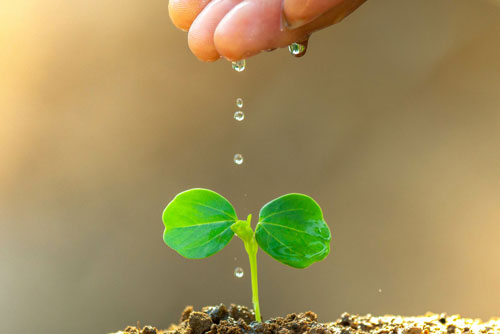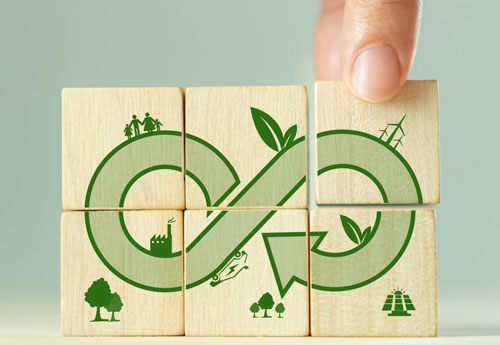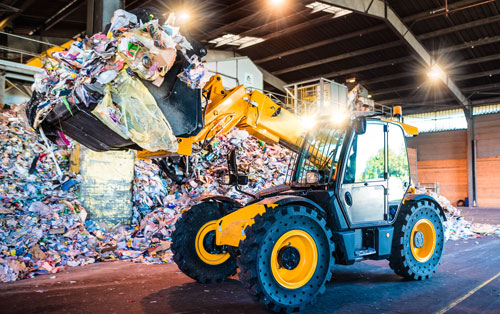Turning Australia's trash into renewable treasure
Australia is investing in a circular economy to help achieve Goal 12 of the Sustainable Development Goals (SDGs) – Responsible Consumption and Production. By incorporating waste management alternatives such as product stewardship, packaging and recycling infrastructure, a circular economy will help tackle the burgeoning negative impacts of waste on the climate and the environment.
This article will examine how Australia is embracing waste as a resource and providing a framework to help households, businesses, and communities to turn rubbish into valuable energy.
Transitioning to a circular economy
To do its part for the 2030 Agenda and the goal of responsible consumption and production, the Australian Government is changing the way Australians think about waste. To see it not as something that fills our bins or ends up in waterways and landfill, but something that can be retained, repurposed, and reused, and can add invaluable benefit to human health, the environment, and the economy.
Australia’s National Waste Policy 2018 has been updated to accommodate this transition, and five circular economy principles to help businesses, governments, consumers and individuals take action against waste have been developed. Seven targets have also been established to assist with the implementation of the policy. These are outlined below and in further detail in the National Waste Policy Action Plan 2019.

Circular economy principles, strategies and targets
| Principles | Strategies | Targets |
| 1. Avoid waste | 1. Deliver actions to help communities and business avoid and minimise waste
2. Design systems and products to avoid waste and conserve resources 3. Implement knowledge sharing and education on the waste hierarchy and circular economy |
1. Regulate the export of waste
2. Reduce total waste generated by 10% per person by 2030
3. Recover 80% of all waste by 2030
4. Significantly increase the use of recycled content by governments and industry
5. Phase out problematic and unnecessary plastics by 2025
6. Halve the amount of organic waste sent to landfill by 2030
7. Provide data to support better decisions |
| 2. Improve resource recovery | 4. Develop and implement partnerships across government and business to ensure ownership and responsibility for action to minimise the negative impacts from products
5. Implement a common approach towards waste policy and regulation 6. Improve regional, remote and Indigenous communities’ access to circular economy participation 7. Identify and address opportunities across municipal waste, commercial and industrial waste, and construction and demolition waste streams for improved collection. |
|
| 3. Increase use of recycled material and build demand and markets for recycled products | 8. All Australian governments consider environmental issues in their approach to goods and infrastructure procurement
9. Businesses and individuals take environmental issues into account when purchasing or manufacturing goods and services |
|
| 4. Better manage material flows to benefit human health, the environment and the economy | 10. Reduce the impacts of plastics and packaging on the environment and oceans
11. Manage and regulate chemicals and wastes to minimise environmental and human health impacts 12. Reduce organic waste by avoiding their generation and supporting diversion away from landfill |
|
| 5. Improve information to support innovation, guide investment and enable informed consumer decisions | 13. Support consumers and manufacturers to make more informed decisions by improving national data and reporting on wastes and recycling
14. All Australian governments and businesses generate and report information to support creating and maintaining markets for recycled materials |

Reduce, recover, reuse across Australia
In 2020, the Australian Government committed $190 million to a Recycling Modernisation Fund (RMF), which supports the recovery of waste that is generated by turning it into high quality materials and products. The RMF, along with other commitments and measures to support Australia’s National Waste Policy Action Plan, aims to improve resource recovery rates, divert over 10 million tonnes of waste from landfill, create thousands of jobs for Australians and boost the economy. A crucial principle, particularly when a full ban on exported waste will come into effect in 2024, meaning Australia will need to recycle an additional 650,000 tonnes of waste plastic, paper, glass and tyres per year to meet the criteria.
Current* investments in Australia’s waste and recycling infrastructure
Australian Capital Territory
- $21 million upgrade to the ACT Material Recovery Facility.
New South Wales
- $40 million for 37 projects and trials for glass processing, the expansion and upgrade of recycling equipment, and new materials recovery facilities, among other things.
Queensland
- As of July 2021, an $80 million combined investment was announced to scale up, transform, and grow the state’s waste and recycling industries. Nothing further has been announced.
South Australia
- $36.9 million to support various projects that will boost SA’s recycling and manufacturing sector.
Tasmania
- $11 million towards transforming Tasmania’s waste and recycling industry.
Victoria
- $62.6 million to strengthen Victoria’s waste and recycling industry and infrastructure for glass, paper, cardboard, plastics and tyres.
Western Australia
- $35 million toward eight plastic and tyre processing projects and $30 million into recycling waste paper and cardboard at a new pulp mill in Perth.
* These investments are constantly updating. This information was published on 20 January 2022.

References
- Australian Government Publication: $1 Billion Waste and Recycling Plan to Transform Waste Industry
- Australian Government Publication: National Waste Policy
- Australian Government Publication: National Waste Policy Action Plan
- DAWE Webpage: How we manage waste
- DAWE Webpage: Investing in Australia’s waste and recycling infrastructure
- DAWE Webpage: Investing in Recycling Infrastructure
- Department of Foreign Affairs and Trade Publication: Report on the Implementation of the Sustainable Development Goals
- Queensland Government Publication: $2.1 billion package to deliver a Queensland recycling revolution